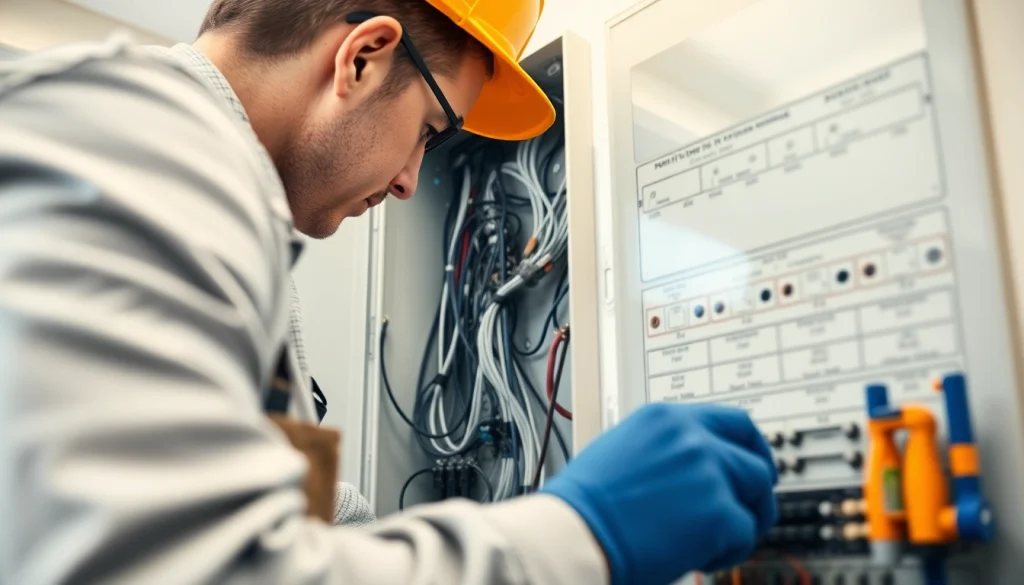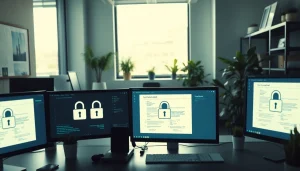Comprehensive Guide to Electrical Service: Installation, Maintenance, and Safety

Understanding Electrical Service
In today’s modern world, electrical service is integral to both residential and commercial infrastructures. Whether you are moving to a new property, renovating your existing space, or simply in need of maintenance and repairs, understanding electrical service is essential for safety and functionality. Proper Electrical Service not only ensures an efficient energy supply but also emphasizes safety in homes and workplaces. This guide will delve deep into electrical services, covering types, components, installation processes, maintenance, and cost considerations.
What is Electrical Service?
Electrical service refers to the installation, maintenance, and repair of electrical systems and components that distribute power in residential and commercial settings. This includes everything from service panels to wiring and outlets. The primary purpose is to ensure a reliable, safe, and adequate supply of electricity for lighting, appliances, and other electrical devices.
Importance of Proper Electrical Service
The significance of proper electrical service cannot be overstated. It plays a crucial role in ensuring the safety and efficiency of electrical systems. Inadequate or faulty electrical installations can lead to safety hazards, including electrical fires and electrocution. Furthermore, a well-designed electrical system can improve energy efficiency, reducing costs over time while enhancing the comfort and functionality of homes and businesses.
Common Types of Electrical Services
Electrical services can vary widely depending on the needs of a property. Here are some common types:
- Residential Electrical Service: Involves electrical installations in homes, such as lighting, outlets, and service upgrades.
- Commercial Electrical Service: Encompasses larger installations in businesses, including complex lighting systems and heavy machinery connections.
- Emergency Electrical Service: Provides urgent repairs for electrical failures or hazardous situations.
- Maintenance Services: Regular check-ups and repairs to ensure systems run effectively.
Key Components of Electrical Service
Electrical Panels and Circuit Breakers
The electrical panel, also known as the circuit breaker box, is crucial in distributing electricity throughout a property. It receives power from the utility company and distributes it to various circuits. Circuit breakers protect against overload and short circuits by shutting off the electrical supply when faults are detected. Understanding how to manage and maintain these components can prolong their lifespan and ensure safety.
Wiring and Connections
The wiring throughout a building is essential for delivering electricity to outlets and appliances. It is important to use the right type of wiring for different applications to meet safety standards. This will involve understanding the gauge and type of wire suitable for specific installations, including copper and aluminum options. Connections must also be secured properly to prevent arcing, which can lead to fire hazards.
Safety Devices: Fuses and Surge Protectors
Safety devices like fuses and surge protectors play vital roles in electrical systems. Fuses are designed to interrupt the flow of electricity during overloads, preventing possible fire hazards. Surge protectors, on the other hand, protect electrical appliances from voltage spikes that can cause damage. Regular inspection and replacement of these safety devices are crucial in maintaining a secure electrical environment.
Installation Process for Electrical Service
Initial Assessments and Planning
The installation of electrical service begins with thorough assessments conducted by qualified professionals. This involves evaluating the property’s power needs and examining the existing electrical systems. Detailed planning is necessary to determine the ideal locations for wiring, outlets, and appliances, ensuring compliance with local building codes.
Steps for Installing Electrical Service
The installation process typically involves several key steps:
- Planning: Developing a layout that considers both functionality and safety.
- Obtaining Permits: Ensuring all local codes and regulations are adhered to.
- Wiring: Running electrical wires according to the layout.
- Installation of Electrical Panels: Setting up main and sub-panels for electricity distribution.
- Final Inspections: Having the completed work inspected by a licensed inspector.
Permits and Regulations
Adhering to local and national electrical codes is crucial for ensuring safety and compliance during installation. Each state may have different regulations, and obtaining the appropriate permits before starting work is often a legal requirement. This step guarantees that safety standards are met, greatly reducing the risk of electrical hazards in the future.
Maintenance of Electrical Services
Routine Checks and Inspections
Routine maintenance of electrical services is essential in preventing failures and hazards. Homeowners and business operators should schedule regular inspections with certified electricians to evaluate the condition of wiring, outlets, and safety devices. This proactive approach can catch potential issues before they escalate, saving time and costs in the long run.
Troubleshooting Common Issues
Common electrical issues may include flickering lights, frequent circuit breaker tripping, or dead outlets. Troubleshooting these problems involves checking connections, inspecting wiring and circuits, and ensuring that appliances are functioning properly. Knowing when to troubleshoot and when to call a professional can help avoid costly repairs.
When to Call a Professional
While some minor electrical work can be done by homeowners, it is always advisable to reach out to a licensed electrician for significant repairs or installations. If there are signs of burning smells, electrical shocks, or frequently tripped breakers, these can signify serious underlying issues that require professional expertise.
Cost Considerations for Electrical Service
Factors Influencing Electrical Service Costs
The cost of electrical services can vary greatly based on several factors. These include the complexity of the job, type of materials used, the region of service, and labor costs. Additionally, emergency services typically come at a premium, reflecting the immediate response required from electricians.
Estimating Costs for Installation and Repairs
For homeowners and businesses looking to budget for electrical service, obtaining multiple estimates from licensed electricians is wise. Most electricians provide transparent pricing, which can help in making informed decisions. Typical costs include material costs, labor costs, and permit fees.
Cost-Saving Tips for Homeowners
Cost savings in electrical services can often be achieved through careful planning and regular maintenance. Here are some tips to manage expenses:
- Conduct routine inspections to catch problems early.
- Invest in energy-efficient devices to reduce ongoing costs.
- Schedule maintenance during off-peak seasons for better rates.
- Consider DIY for minor repairs only if you have the necessary skills and knowledge.







